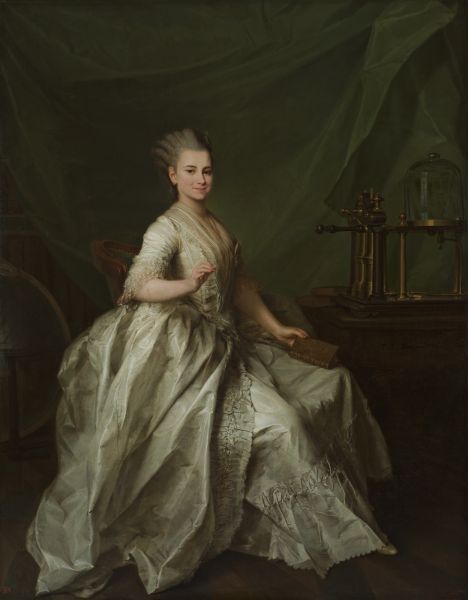|
|
Portrait of Yekaterina Molchanova. 1776

Levitsky Dmitry,
Oil on canvas
181,5 х 142,5
State Russian Museum
Annotation
In the seventies of the 18th century Catherine II commissioned Levitsky to paint a series of "Smolyanki" that consisted of seven portraits of the pupils of the Smolny Institute for Noble Maidens – privileged educational establishment, opened in St. Petersburg in 1764 by decree of the Empress. Daughters of the nobles were preparing there for the Royal Court service and secular life. Talents that were "pleasant in society" were developed in girls. They were taught French and German languages, the elegant manners, as well as singing, dancing, playing musical instruments. The performances were often held in the Smolny Institute. Smolyanki acted out French comedies and also performed in ballet.
Molchanova Ekaterina Ivanovna (1758–1809) – daughter of collegiate counselor I.Y. Molchanov, ward of M.J. Naryshkina ,the wife of the “ober-egermejster” (court rank of class II in the Table of Ranks in Russia, headed imperial hunting). M.J. Naryshkina helped her to enter the Smolny Institute (1764). In 1776 Molchanova Ekaterina Ivanovna graduated from the course with a gold medal and the insignia (cipher) of Catherine II designed as a brooch in the shape of the Empress initial. Since 1776 she was the maid of honor of the Grand Duchess Maria Feodorovna, in late 1770 – the maid of honor of Catherine II. Since 1780 she was married to S.A. Olsufyev who later became a Major-General.
Molchanova Ekaterina Ivanovna is depicted in the a white silk dress that was obligatory for the older pupils (fourth grade) of the Educational Society for Noble Maidens. Right on the table there is an antle – the vacuum pump used as a guide for teaching of students of Smolny Institute (“smolyanki”).
Author's Biography
Levitsky Dmitry
Levitsky, Dmitry Grigoryevich
1735, Kiev - 1822, St Petersburg
Leading Russian eighteenth-century painter and portraitist. Son of Grigory Levitsky Nos, a priest and Ukrainian engraver. Moved to St Petersburg (c. 1758). Studied under Alexei Antropov. Worked in Moscow (17605). Nominated to the Academy (c. 1769). Academician (1770). Headed the portraiture class at the Imperial Academy of Arts (1771-87). Councillor (1776), member of the Academy council (1780). Retired for unknown reasons (1787). Worked as a free painter. Returned to the Academy council (1807).

